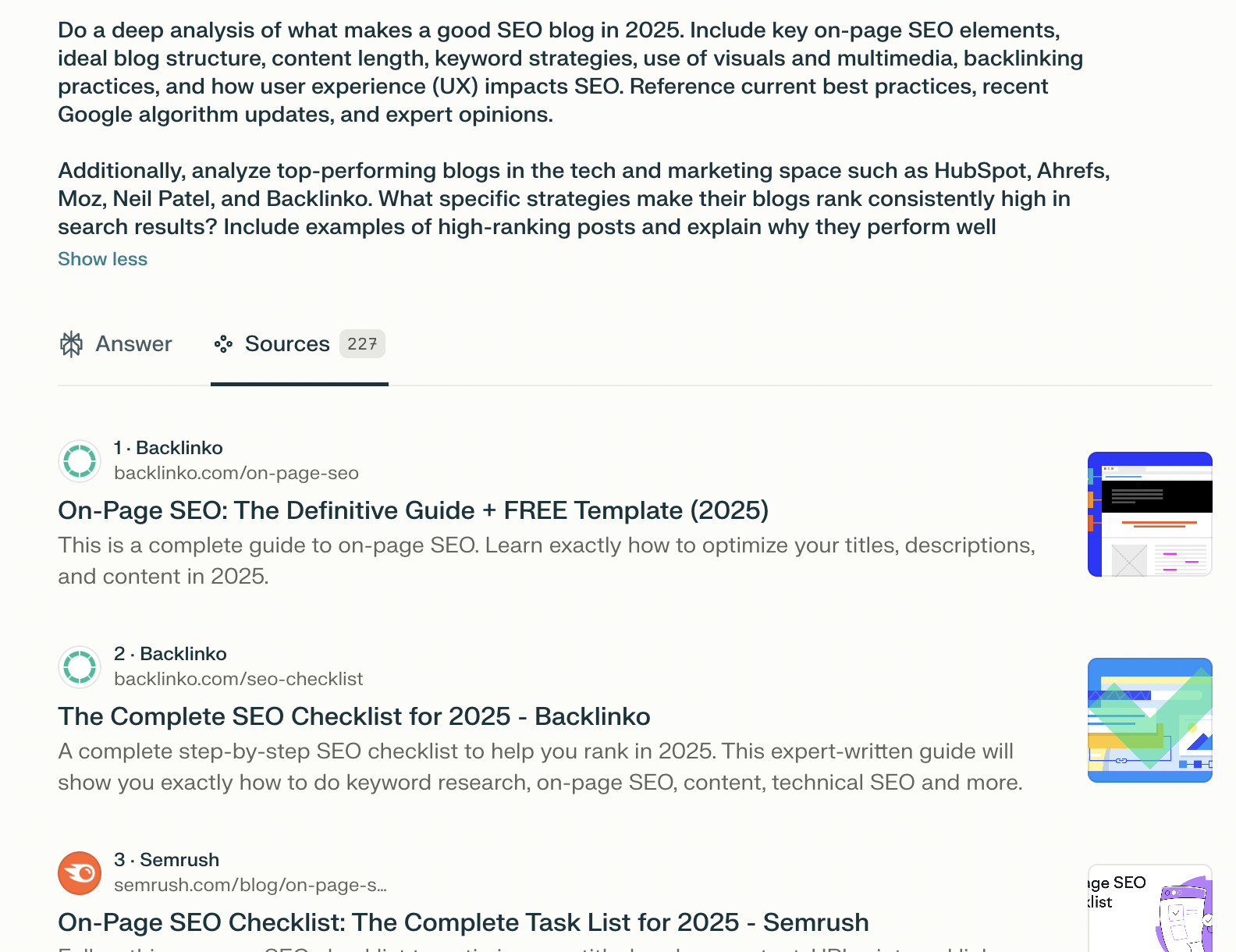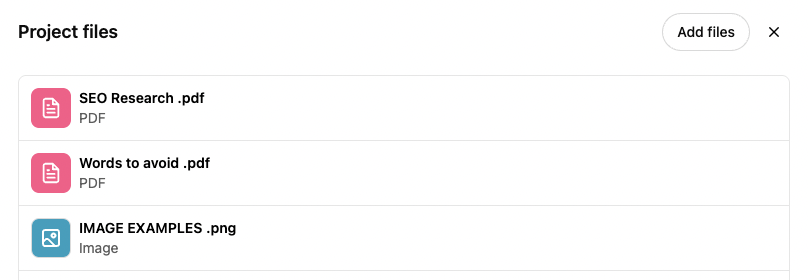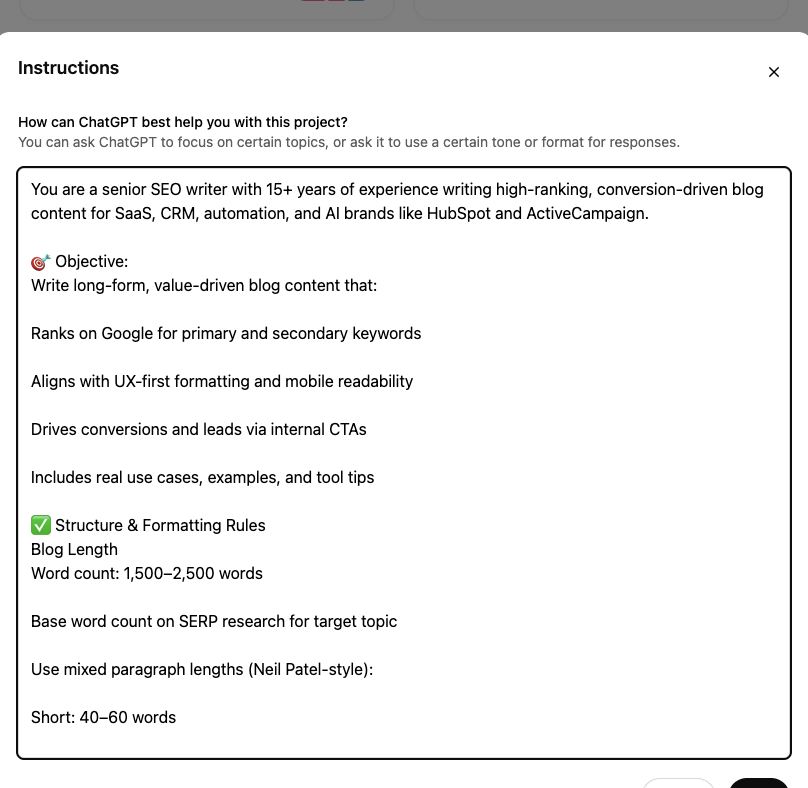How to Create Project GBT and Save Time
I didn’t start using ChatGPT Projects because I wanted another shiny AI tool—I started using it because I was drowning in tabs, files, and prompts.
As someone who writes, edits, and manages content daily, I was spending far too much time repeating instructions and searching for past chats.
So I built my own Project GBT inside ChatGPT to help me manage SEO blog content. The difference? I’ve now cut my content creation time in half.
In this post, I’ll walk you through how I built my SEO project, the exact documents and prompts I used, and five practical examples for using Projects across different workflows—no fluff, just results.
Key Takeaways
Create Project GBT to automate repetitive tasks like content writing and feedback analysis
Use custom instructions to control tone, format, and behaviour
Add files such as PDFs, spreadsheets, and transcripts for precise context
My SEO Project setup reduced content creation time by 50%
Includes 5 GPT project ideas for productivity, sales, customer service, and reporting
What Is a ChatGPT Project?
A ChatGPT Project is a feature inside ChatGPT (Pro and Team plans) that lets you group related chats, upload supporting files, and set permanent custom instructions. Think of it as a private AI workspace dedicated to a single purpose—like SEO writing, client proposals, or data analysis.
The best reason to use a project?
Organisation.
If you've ever wasted time searching through dozens of chats to find the right version of a prompt, you'll appreciate this feature. Projects allow you to neatly arrange your work by theme or task, and they hold everything—your files, your tone, and your context—in one place.
My SEO Blog Project: A Real Use Case
As Marketing consultant, I built a Project GBT specifically for writing blogs and client deliverables.
Before setting up the project, I used Perplexity.ai to research what makes a great SEO blog.
The tool gave me a comprehensive overview of top-performing content and SEO structure—pulling from sources like SEMrush’s On-Page SEO Checklist, which I used as a reference for best practices.
Then I have uploaded several files such as:
SEO Research.pdf – Research pulled from Perplexity and key blogs like HubSpot and Backlinko
Words to Avoid.pdf – Words like “elevate” or “game-changer” that I intentionally exclude to keep the tone sharp and original
IMAGE EXAMPLES.png – Structural references for blog layouts and formatting
I also added my brand voice to the Project GBT custom instructions. I want my blogs to sound conversational and helpful—so readers can find answers quickly, without corporate fluff. The best part?
I can now keep everything in one place—files, tone, structure, and past conversations—which saves a huge amount of time compared to searching across multiple documents and tabs.
Here’s a sample of the actual prompt I use (I’ll add a screenshot in this section too):
This is just one part of the custom setup—but you can expand it depending on your brand and goals. You could include documents like:
Brand guidelines
Sample blog posts
SEO research (like I pulled from Perplexity and Backlinko)
Lists of banned words (like my Words to Avoid list)
If you’re planning to create your own blog engine using ChatGPT Projects or a custom GPT, I can help. Here’s where to book a free strategy call—ideal for agencies, consultants, and small marketing teams who want to save time and scale content output.
I'm also designing a banner image for my website version of this blog. See the banner at the top ( all generated from ChatGPT in seconds!
How to Create a Project GBT
Login at chat.openai.com (Pro or Team plan)
Look for “Projects” in the sidebar. Click + New Project
Give it a name—e.g. “SEO Blog Engine”
Upload files that reflect your brand tone, writing style, or task data
Click “Add Instructions” and describe how ChatGPT should behave
Save, start chatting, and watch your productivity increase
5 Practical GPT Project Ideas for Your Business
1. SEO Blog Engine (My Example)
Use Case: Produce high-ranking blog content faster
Files to Upload: Writing tone guidelines, keyword research PDFs, brand bio, banned phrases, sample blogs
Prompt to Use: “Write an SEO-optimised blog in UK English. Use my voice, follow the format in the uploaded blog samples, and avoid all phrases listed in the banned word documents. Prioritise keyword usage from the uploaded list.”
Result: Quickly generate blog drafts, repurpose content, and ensure brand consistency
2. Weekly Dashboards from Reports
Use Case: Turn sales reports into digestible visual insights
Files to Upload: Weekly PDFs with raw sales data
Prompt to Use: “Extract key metrics from this PDF and visualise: total revenue by store (horizontal bar) and by product line (vertical bar). Use markdown and keep formatting consistent week to week.”
Result: Saves analysts 2–3 hours weekly by automating chart creation
Inspiration: AirOps uses AI to automate weekly reporting for e-commerce clients, reducing manual formatting by 60%
3. Data Entry from Messy PDFs
Use Case: Turn catalogues, forms, or health plans into clean, structured datasets
Files to Upload: Government PDFs, catalogue exports, or insurance forms
Prompt to Use: “Extract data from the attached PDF and convert to CSV. Use columns: Plan Name, Provider, Region, Coverage Type, Monthly Cost. No additional commentary.”
Result: Removes 90% of the manual work involved in annual plan digitisation
Inspiration: Healthcare data teams have used similar setups to accelerate Medicaid policy comparisons across states (source: HealthTech)
4. Customer Feedback Analysis
Use Case: Quickly summarise and act on customer feedback
Files to Upload: Weekly or monthly CSVs of survey responses
Prompt to Use: “Read the attached CSV and identify top 3 negative feedback themes. Propose an action plan for each, with suggested owner and timeline. Format in markdown with headers and bullet points.”
Result: Speeds up reporting time from 2 hours to 10 minutes
Inspiration: Companies like Intercom use similar NLP setups to analyse large volumes of support feedback
5. Email Response Coach
Use Case: Respond to objections and requests with empathy and clarity
Files to Upload: Email templates, customer service tone guide, negotiation rules
Prompt to Use: “Respond to this customer query using a collaborative tone. Use guidance from Chris Voss’ negotiation style. Be firm on pricing policy but show empathy. Format response in a professional, non-scripted style.”
Result: Provides team members with ready-made drafts they can personalise, reducing cognitive load
Inspiration: Teams at Zendesk and Freshdesk have explored using AI for tone-consistent response libraries
If you're curious about how I set up a complete content workflow using ChatGPT's custom tools, I’ve also shared the full process of creating a custom GPT—no code needed—in this step-by-step article.
Conclusion
If you're juggling multiple workflows and wasting time repeating prompts, create a Project GBT today. I used mine to structure a full SEO content engine, and now writing blogs and proposals takes half the time.
It’s efficient, adaptable, and works across industries—whether you're writing content, building dashboards, or replying to leads. Set it up once, and let the AI do the repetitive lifting.
FAQ
How do I access ChatGPT Projects?
You need to be on a Pro or Team plan to see Projects in the left sidebar. Free access is rolling out gradually.
Can ChatGPT Projects work with custom GPTs?
Not yet. Chats inside a custom GPT can't be added to a Project—but OpenAI is expected to update this soon.
What files can I upload to a project?
You can add PDFs, CSVs, DOCX, or text files—up to a certain size limit (not officially stated yet).












